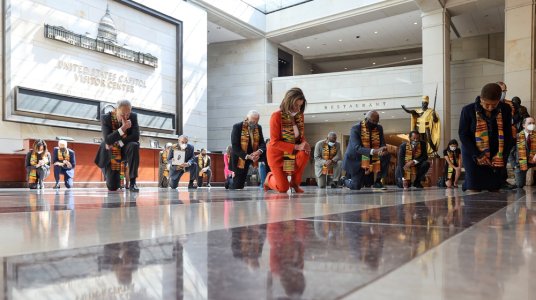- Joined
- Oct 2, 2004
- Runs
- 218,134
Attorney General denies Lafayette Square was cleared for Trump photo shoot
US Attorney General William Barr has defended the clearing of mostly peaceful protesters from Lafayette Square on Monday, denying it was done for President Donald Trump to have a photo shoot in front of a local church.
Barr, in an interview on CBS's "Face the Nation" programme, insisted that, despite contradictory reports from many of those present, that protesters were "rowdy and non-compliant" and some had thrown projectiles, justifying the aggressive response.
He said the clearing was meant to increase the perimeter around the White House and was unrelated to Trump’s photo session.
==
Trump wanted to deploy 10,000 troops in Washington, DC, official says
US President Donald Trump told his advisors at one point this past week he wanted 10,000 troops to deploy to the Washington, DC area to halt civil unrest over the killing of a black man by Minneapolis police,a senior US official told Reuters news agency.
The account of Trump's demand during a heated Oval Office conversation on Monday shows how close the president may have come to fulfilling his threat to deploy active duty troops, despite opposition from Pentagon leadership.
At the meeting, Defense Secretary Mark Esper, the chairman of the Joint Chiefs of Staff, General Mark Milley, and Attorney General William Barr recommended against such a deployment, the official said, speaking on condition of anonymity. The meeting was "contentious," the official added.
US Attorney General William Barr has defended the clearing of mostly peaceful protesters from Lafayette Square on Monday, denying it was done for President Donald Trump to have a photo shoot in front of a local church.
Barr, in an interview on CBS's "Face the Nation" programme, insisted that, despite contradictory reports from many of those present, that protesters were "rowdy and non-compliant" and some had thrown projectiles, justifying the aggressive response.
He said the clearing was meant to increase the perimeter around the White House and was unrelated to Trump’s photo session.
==
Trump wanted to deploy 10,000 troops in Washington, DC, official says
US President Donald Trump told his advisors at one point this past week he wanted 10,000 troops to deploy to the Washington, DC area to halt civil unrest over the killing of a black man by Minneapolis police,a senior US official told Reuters news agency.
The account of Trump's demand during a heated Oval Office conversation on Monday shows how close the president may have come to fulfilling his threat to deploy active duty troops, despite opposition from Pentagon leadership.
At the meeting, Defense Secretary Mark Esper, the chairman of the Joint Chiefs of Staff, General Mark Milley, and Attorney General William Barr recommended against such a deployment, the official said, speaking on condition of anonymity. The meeting was "contentious," the official added.







